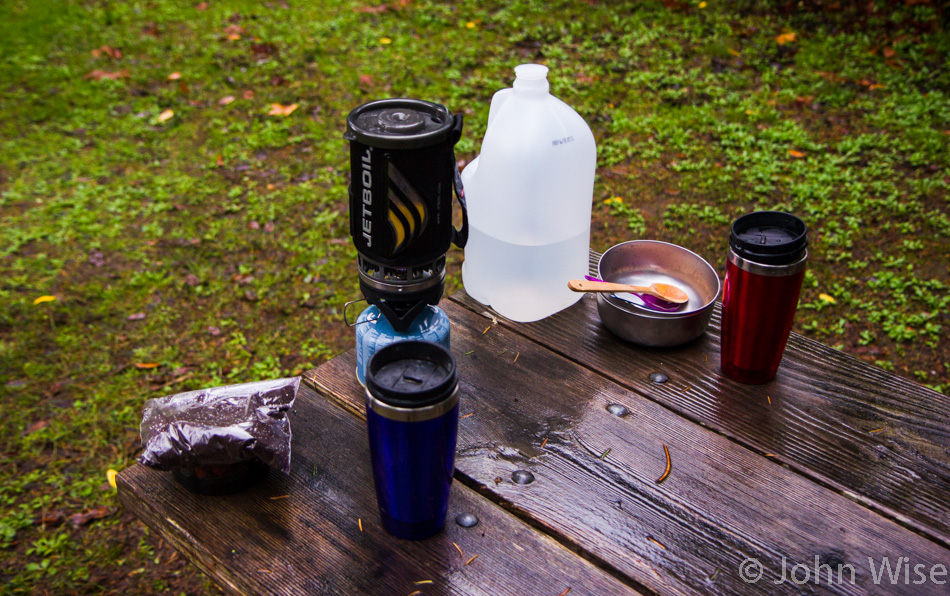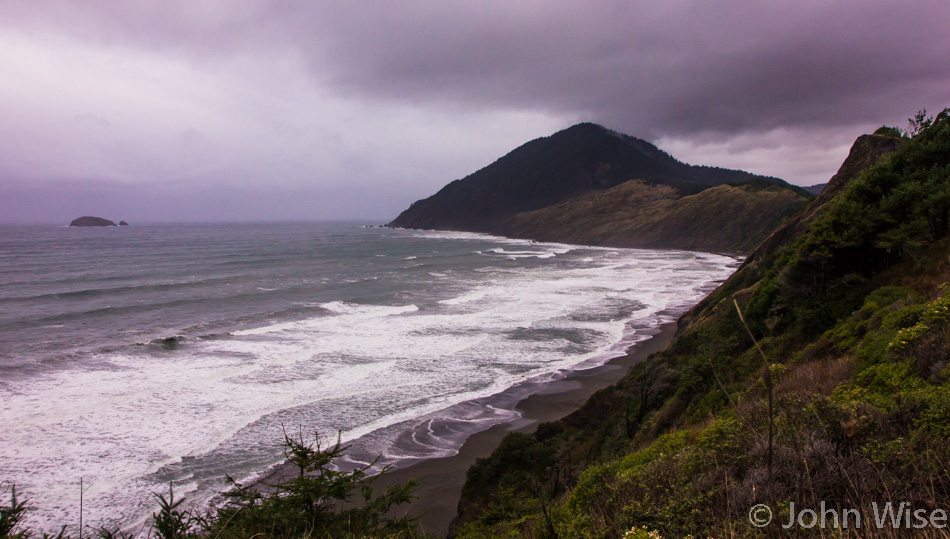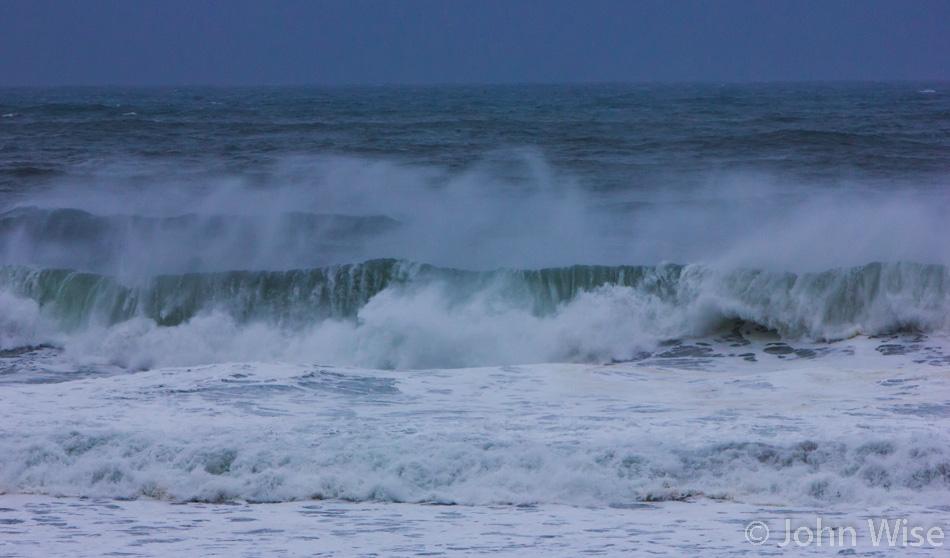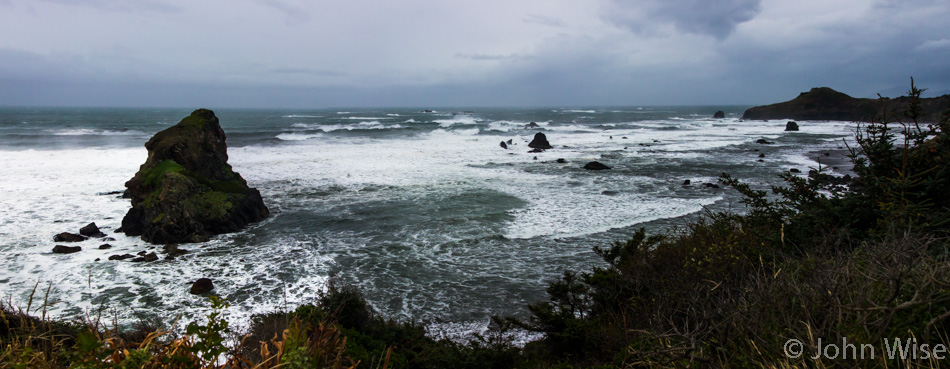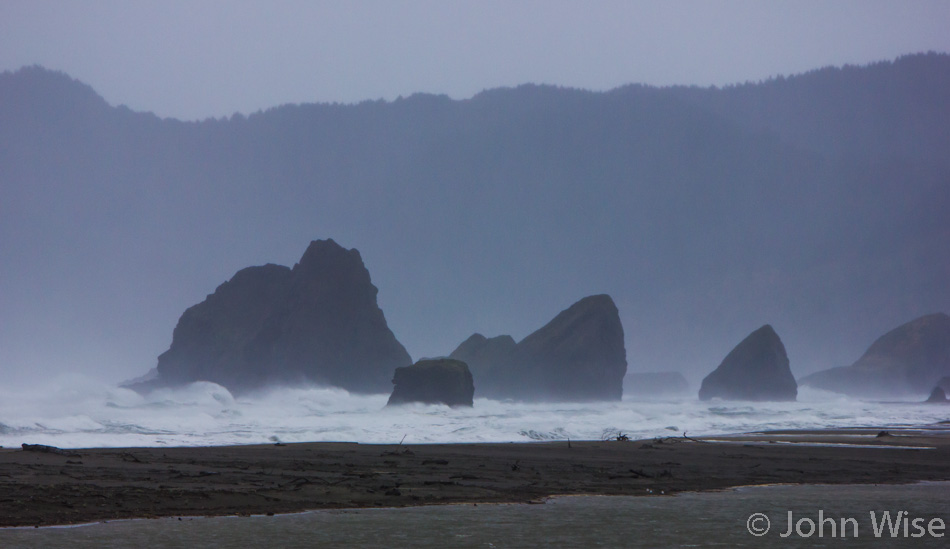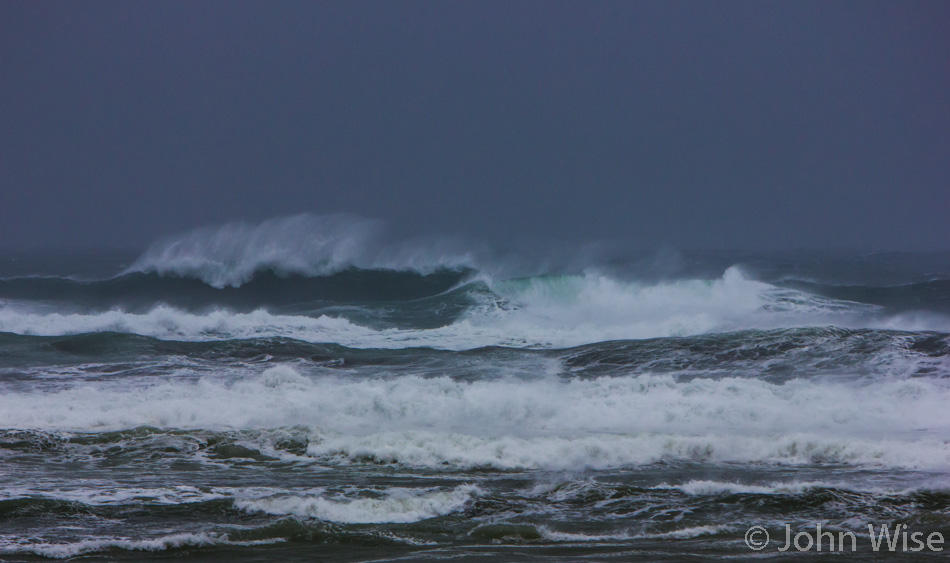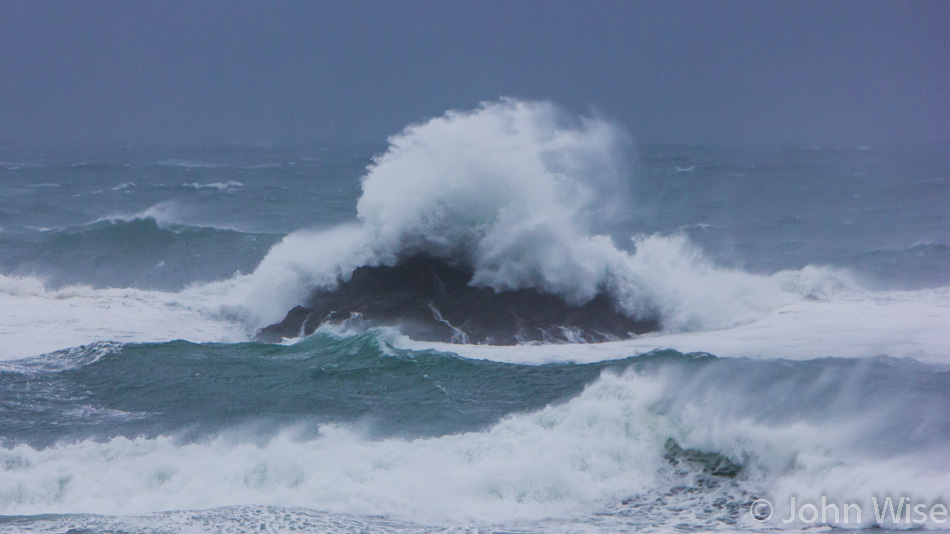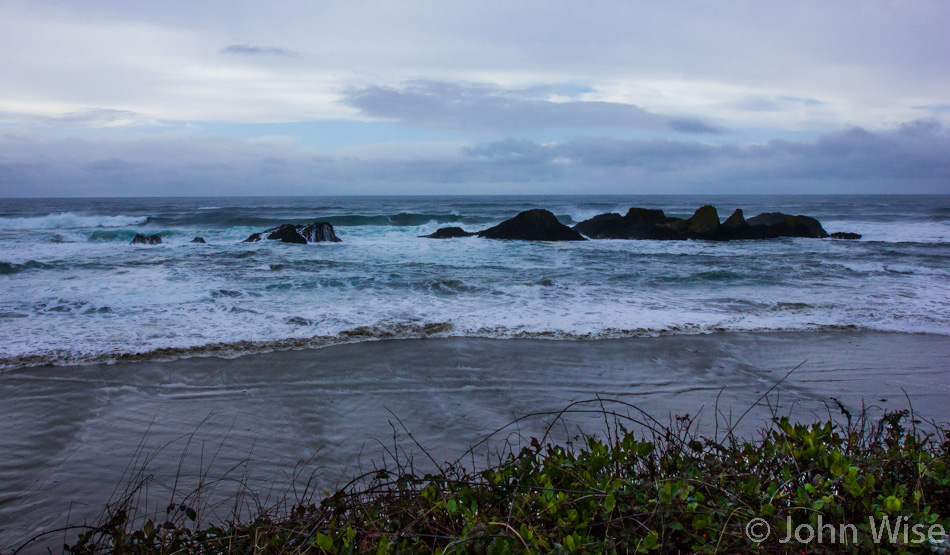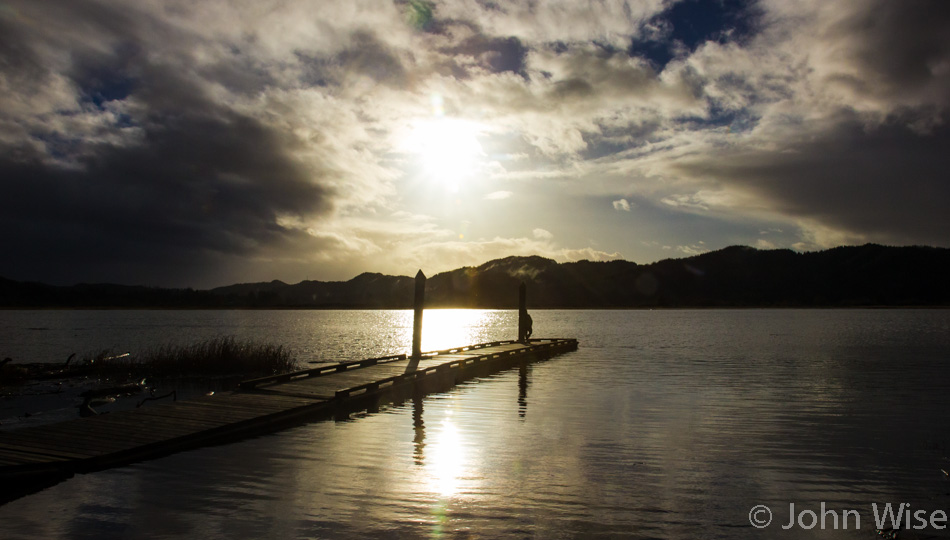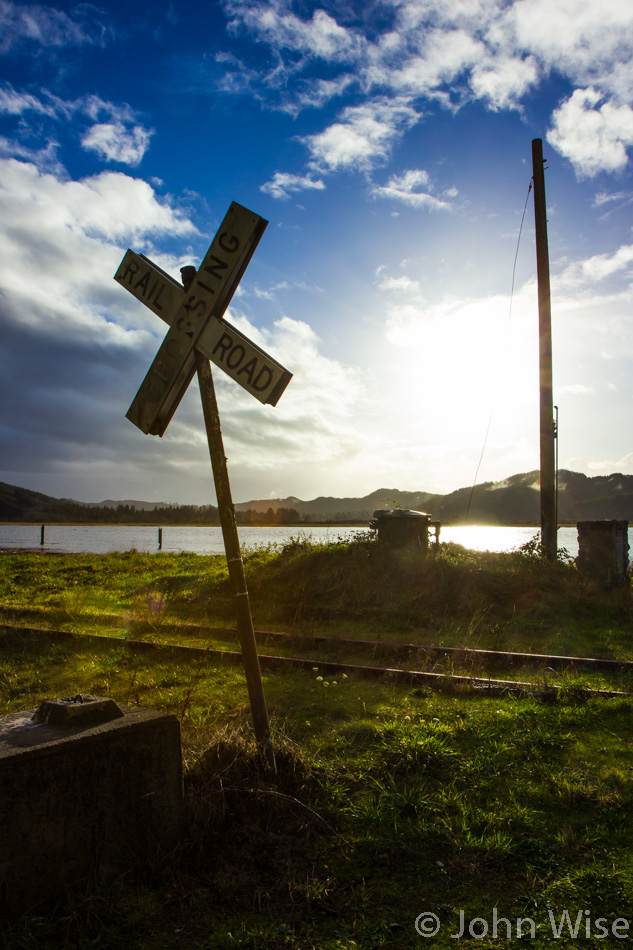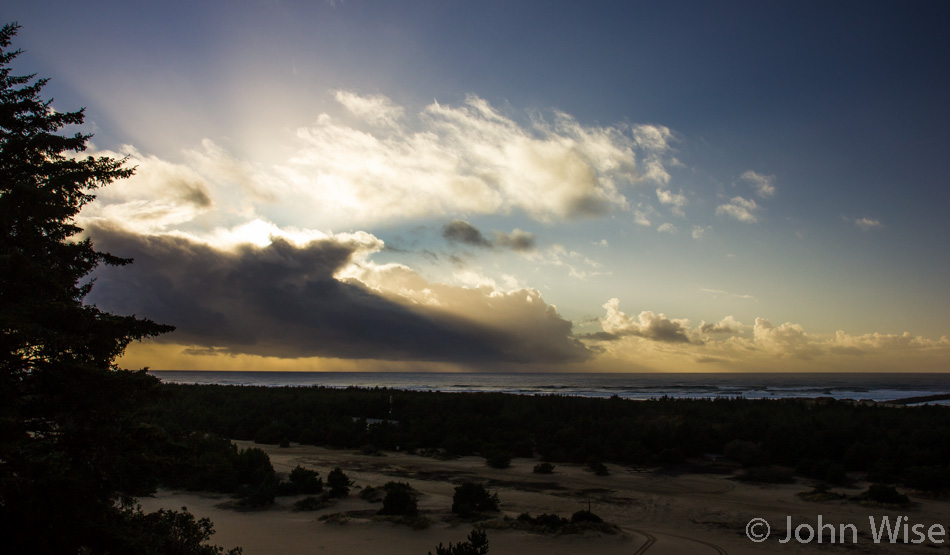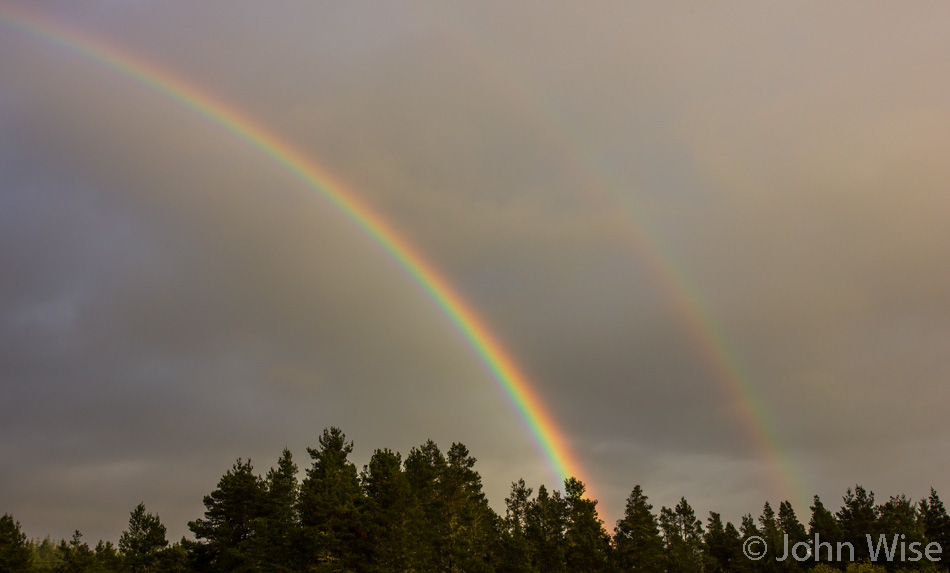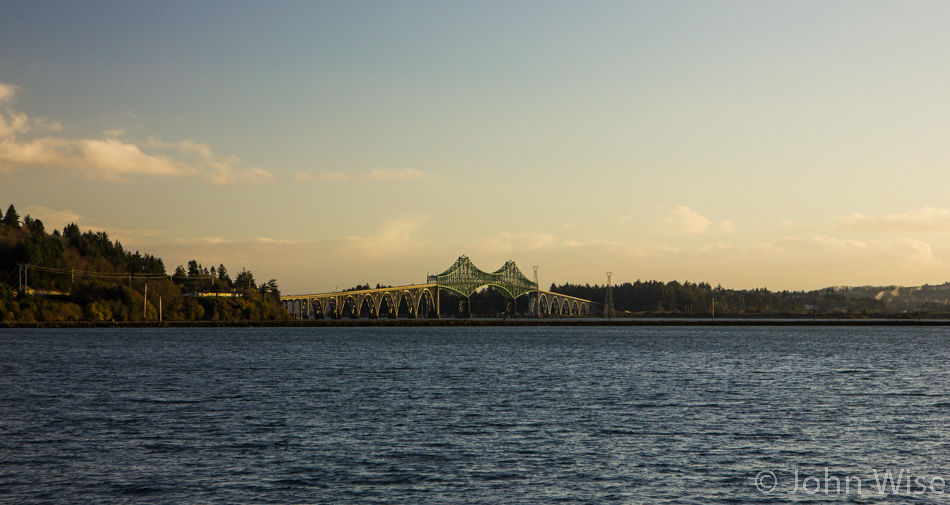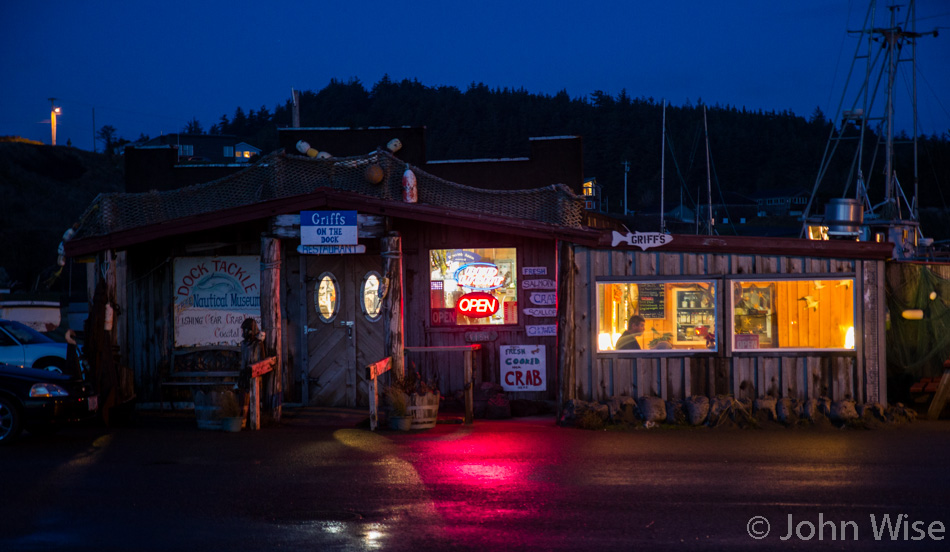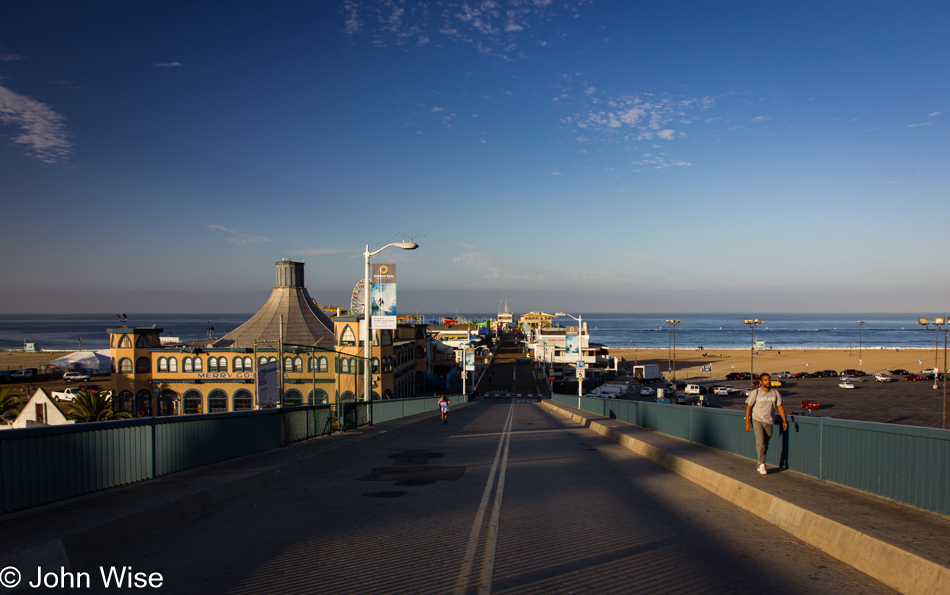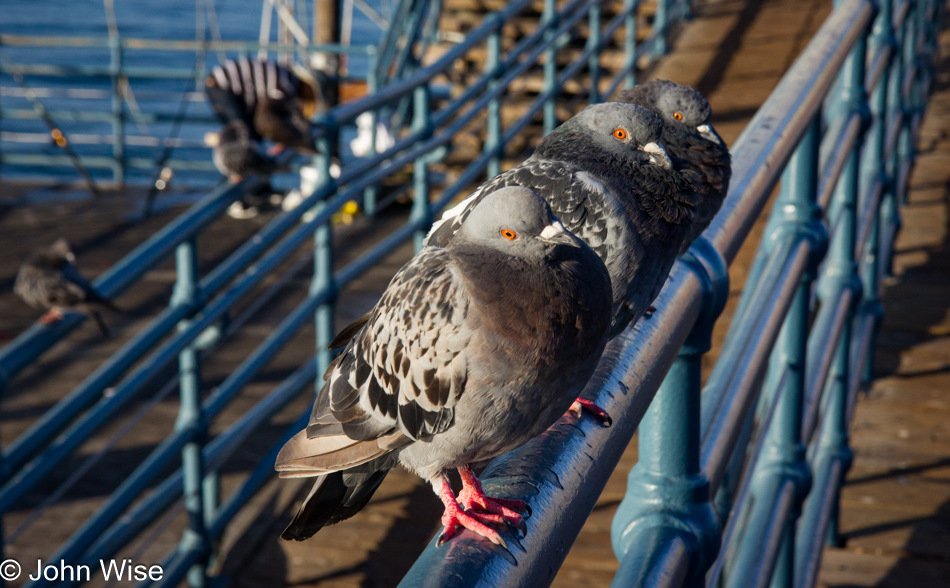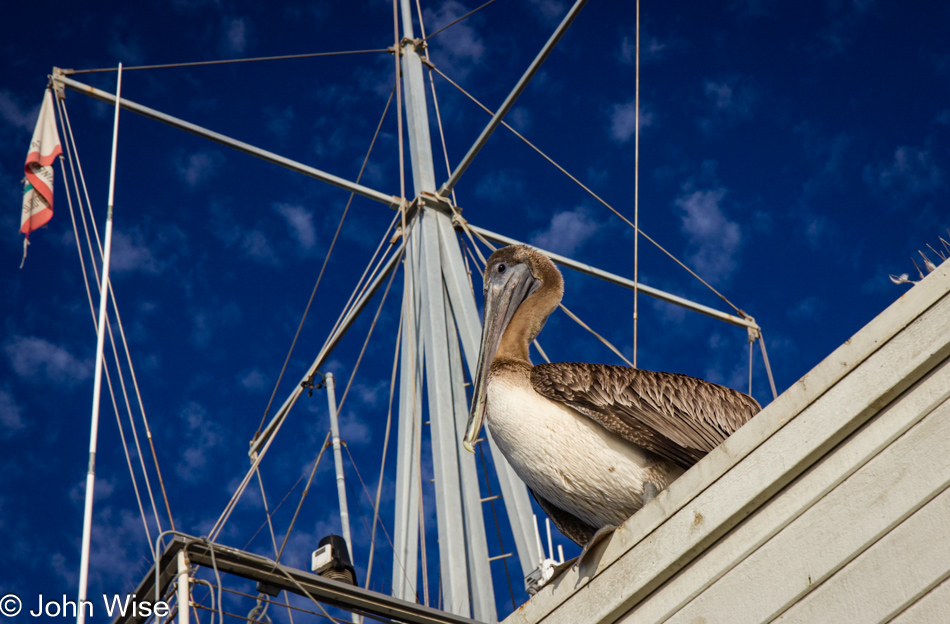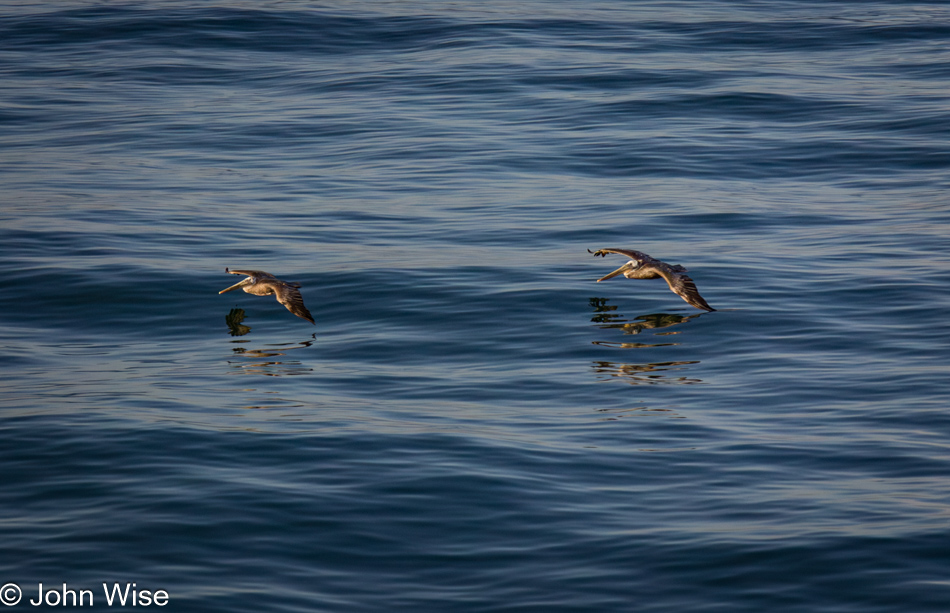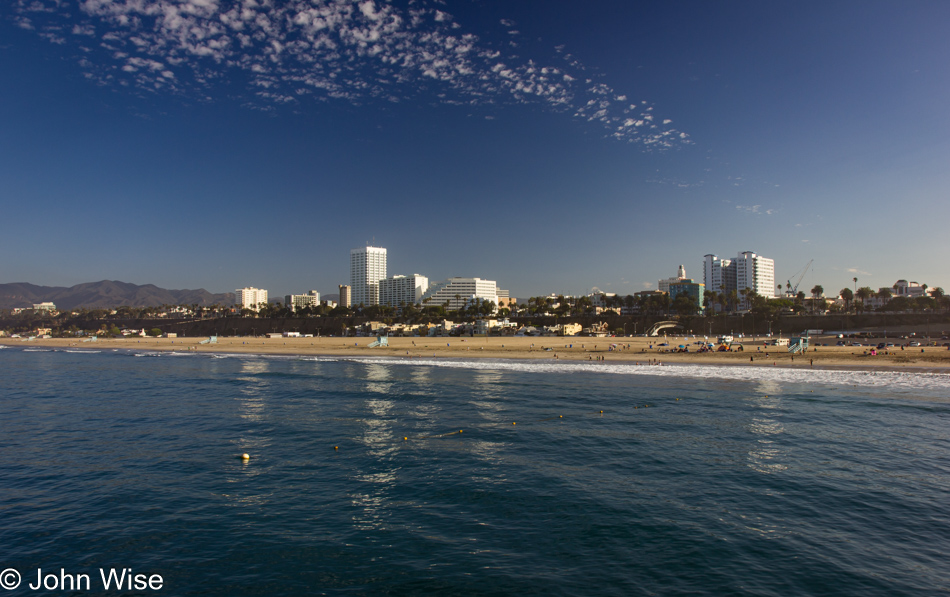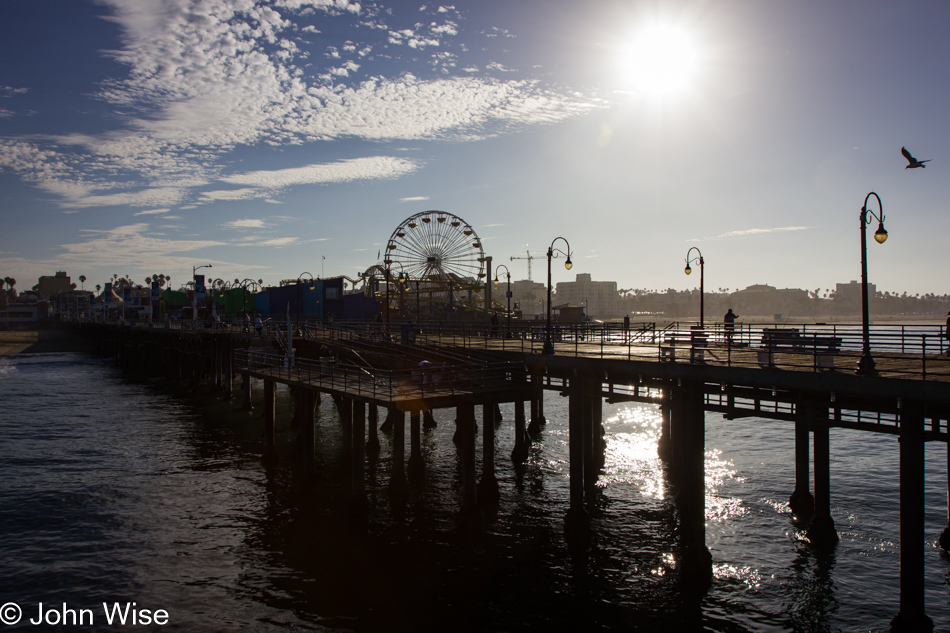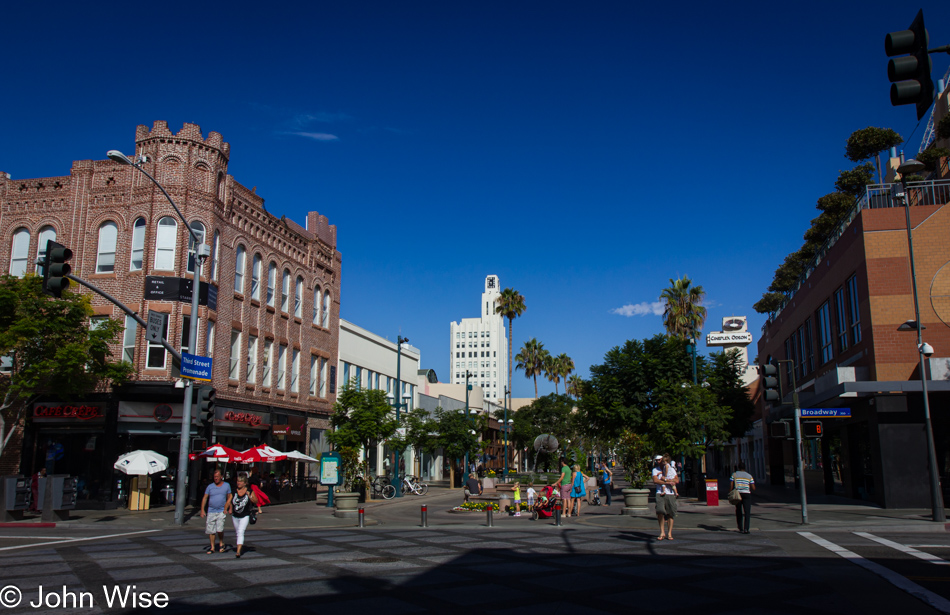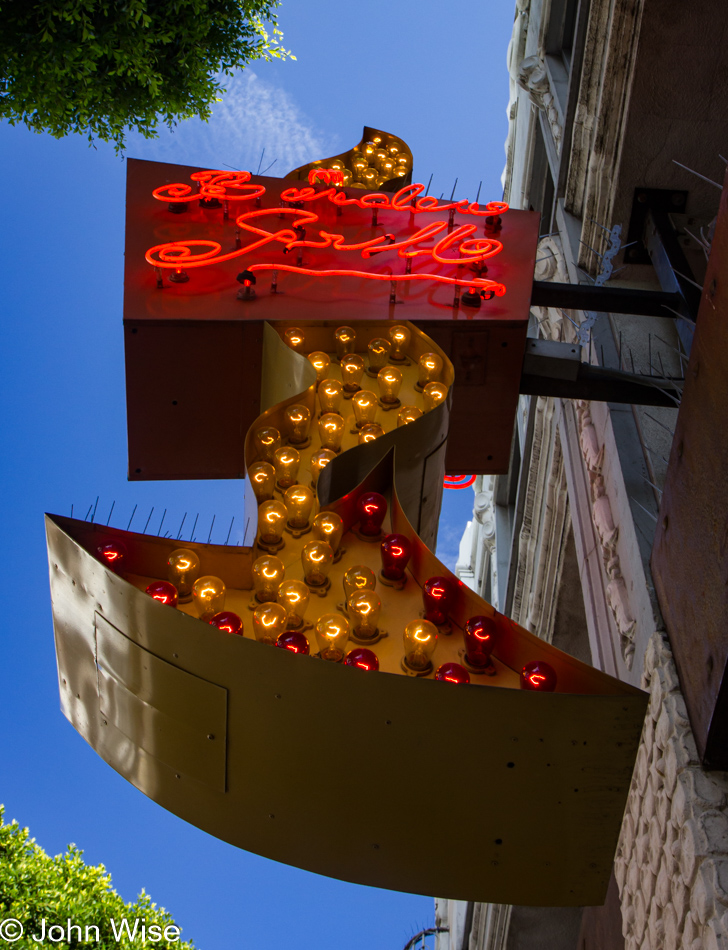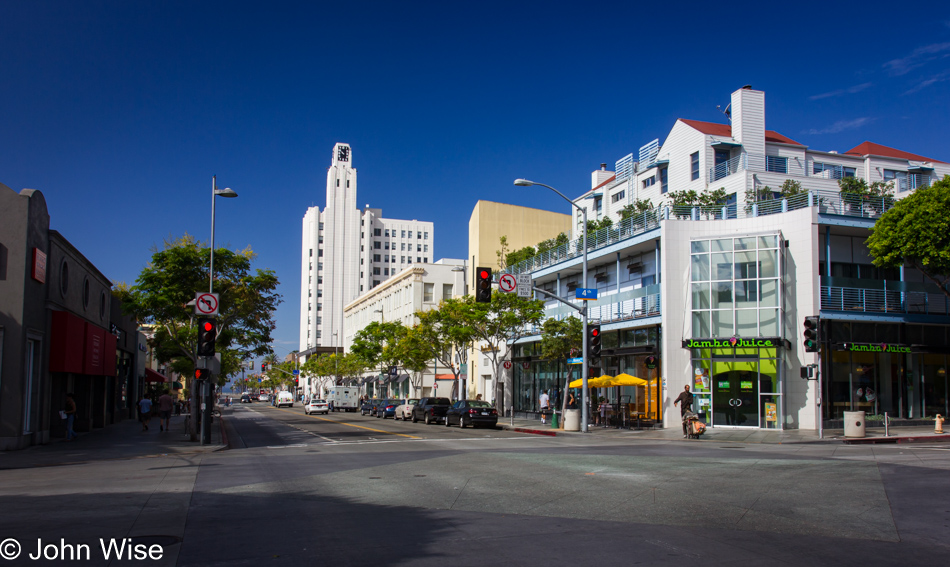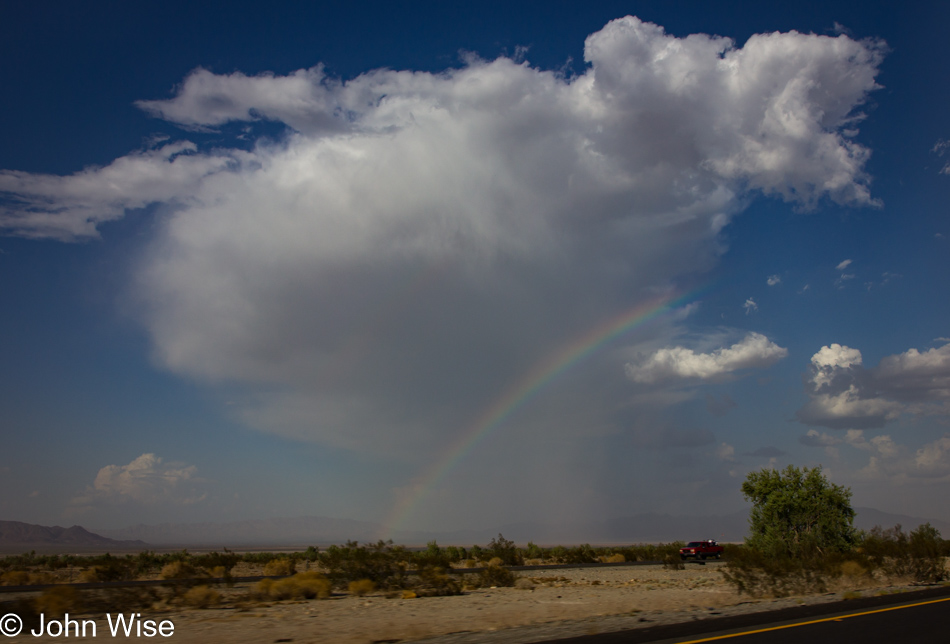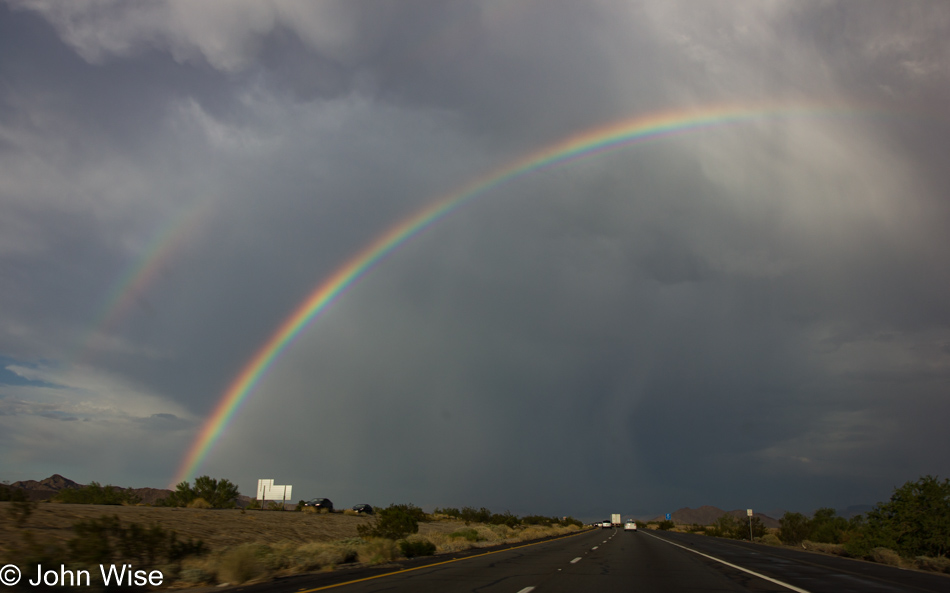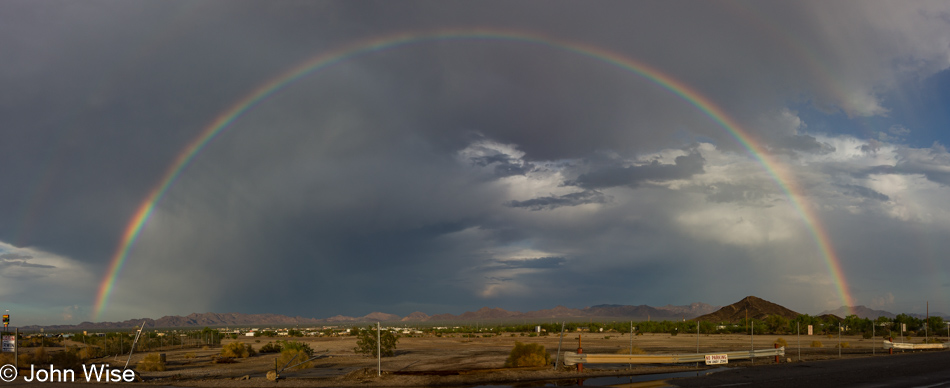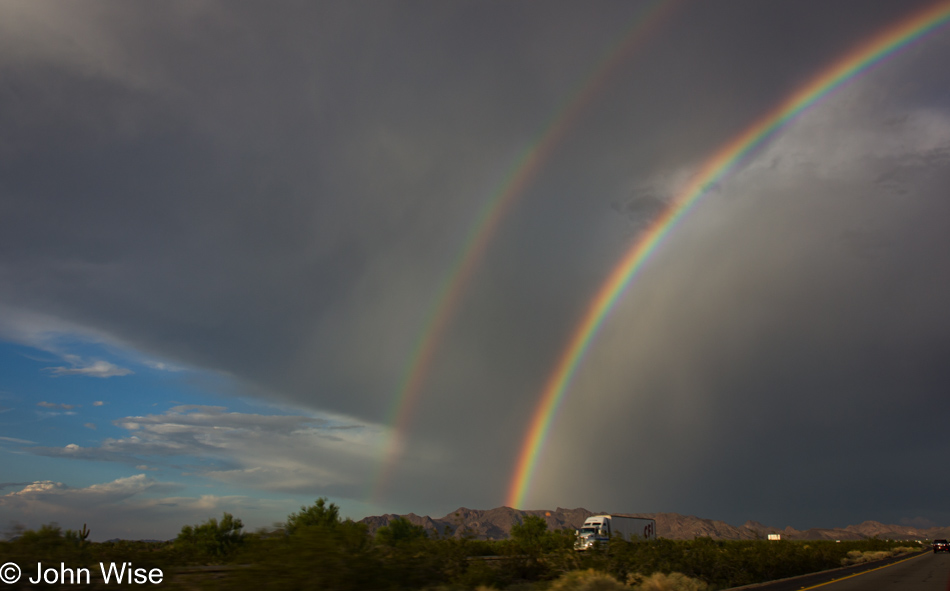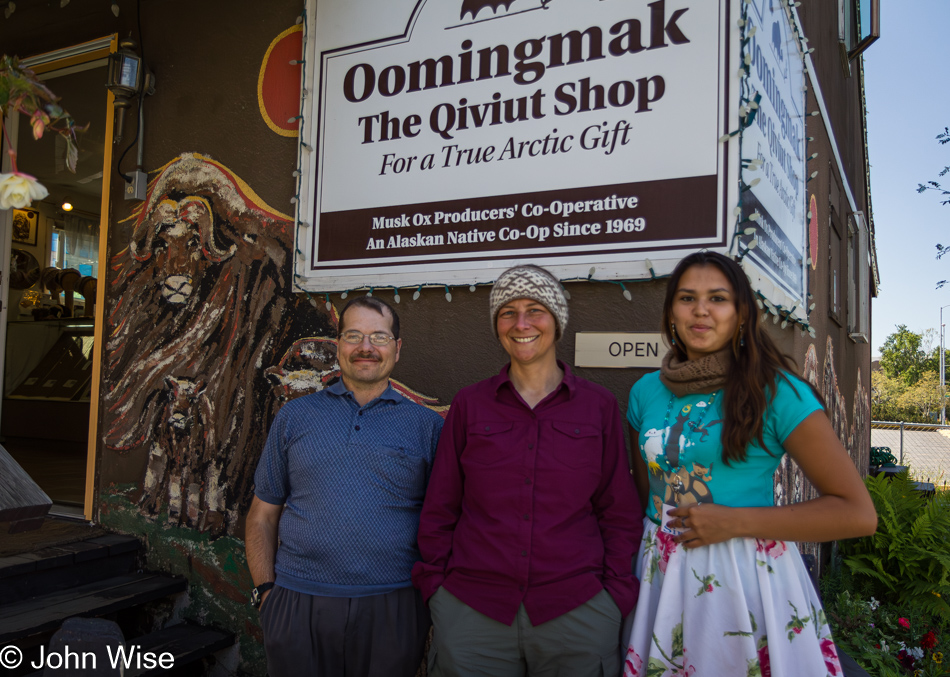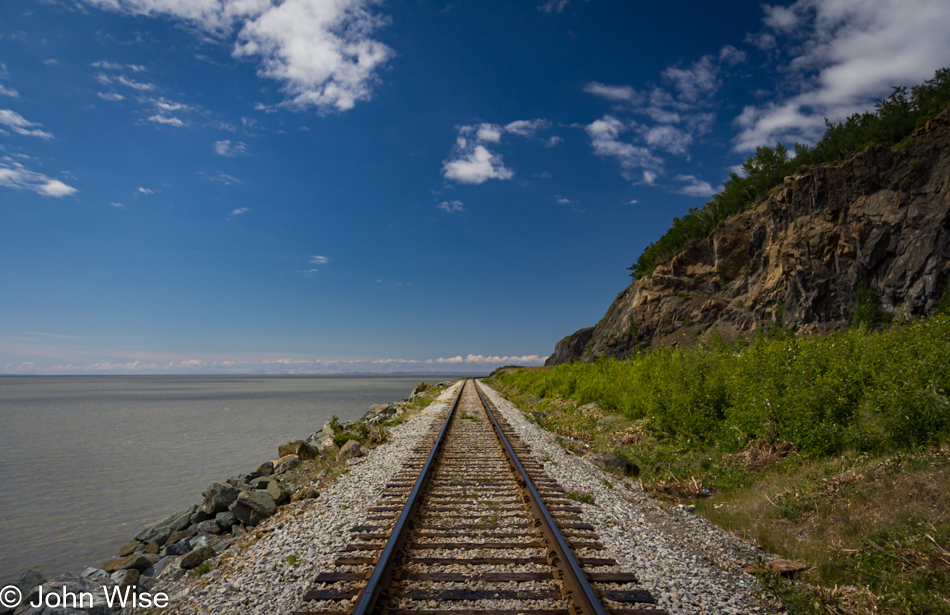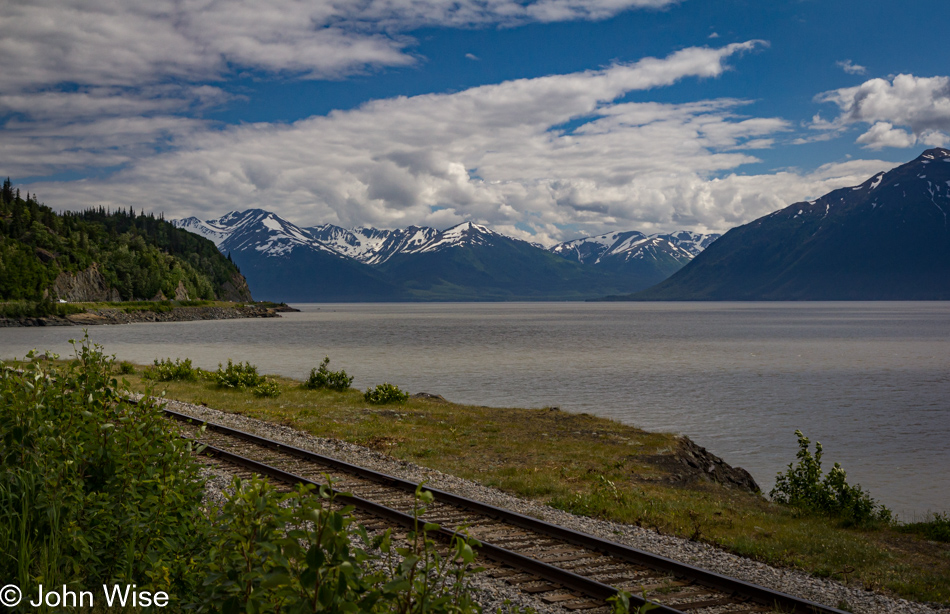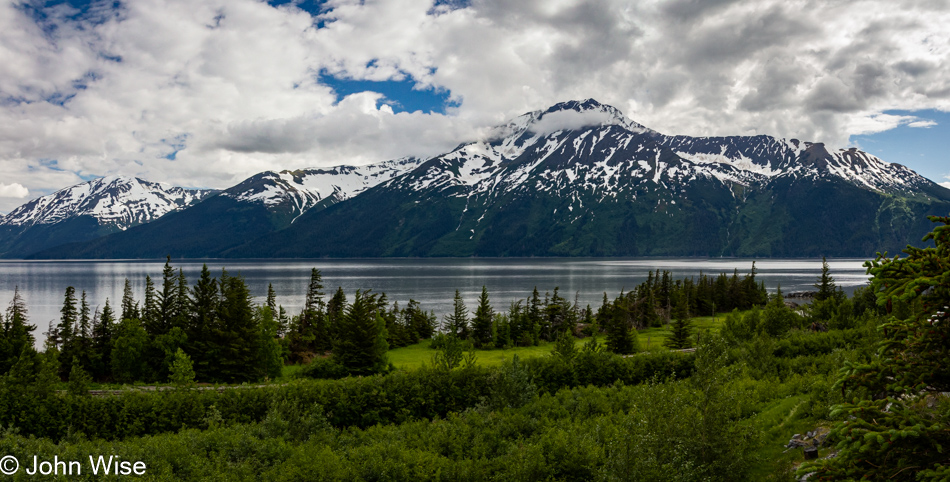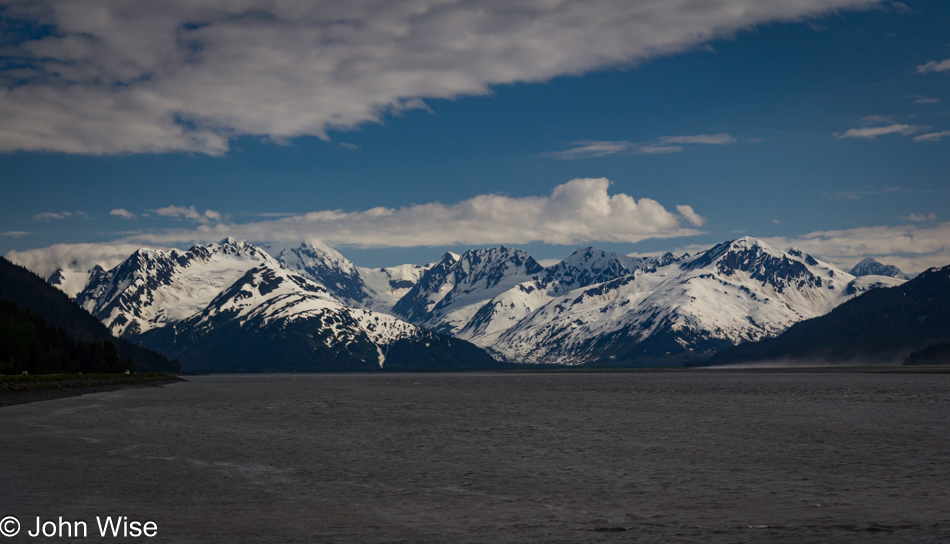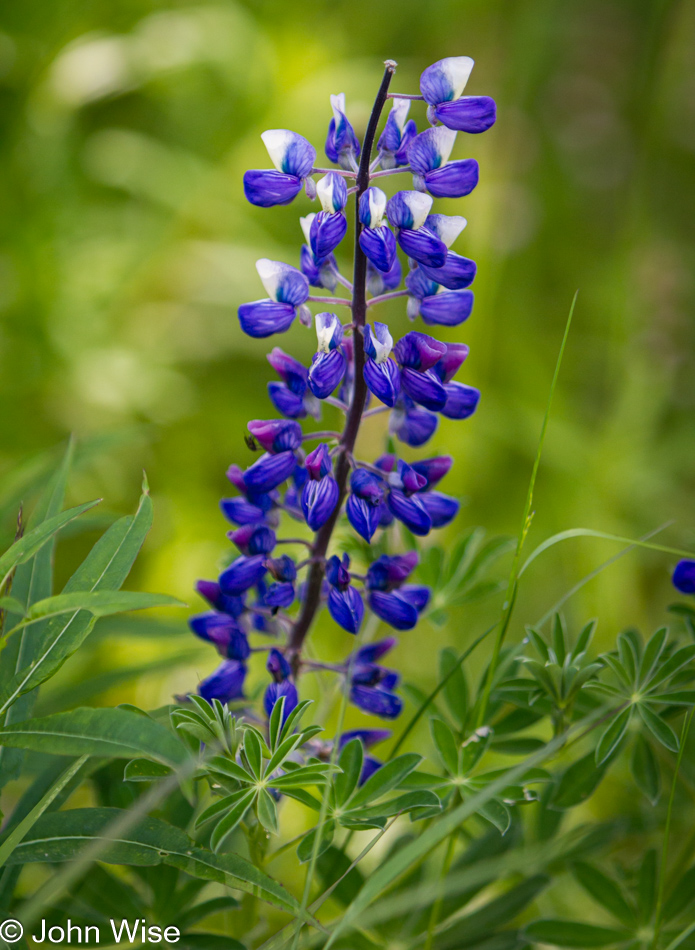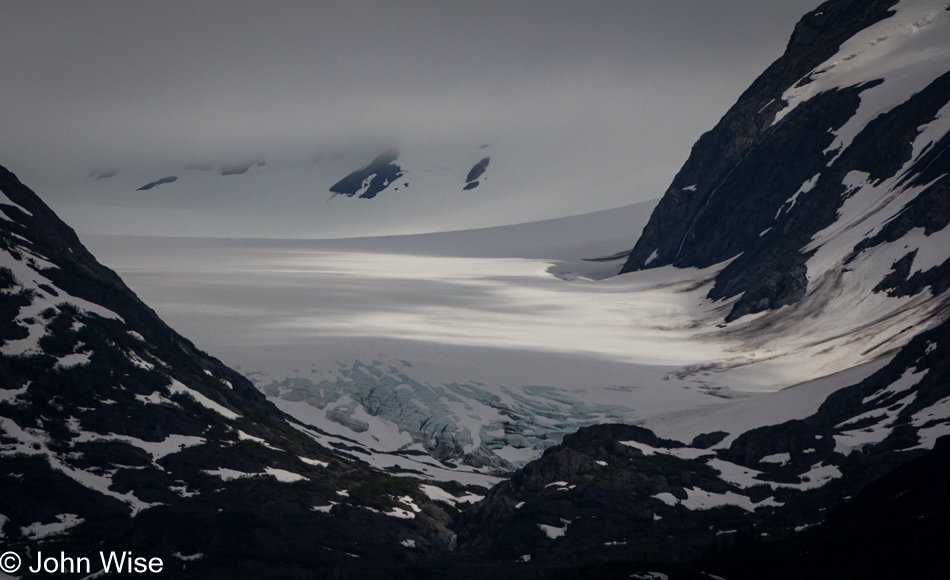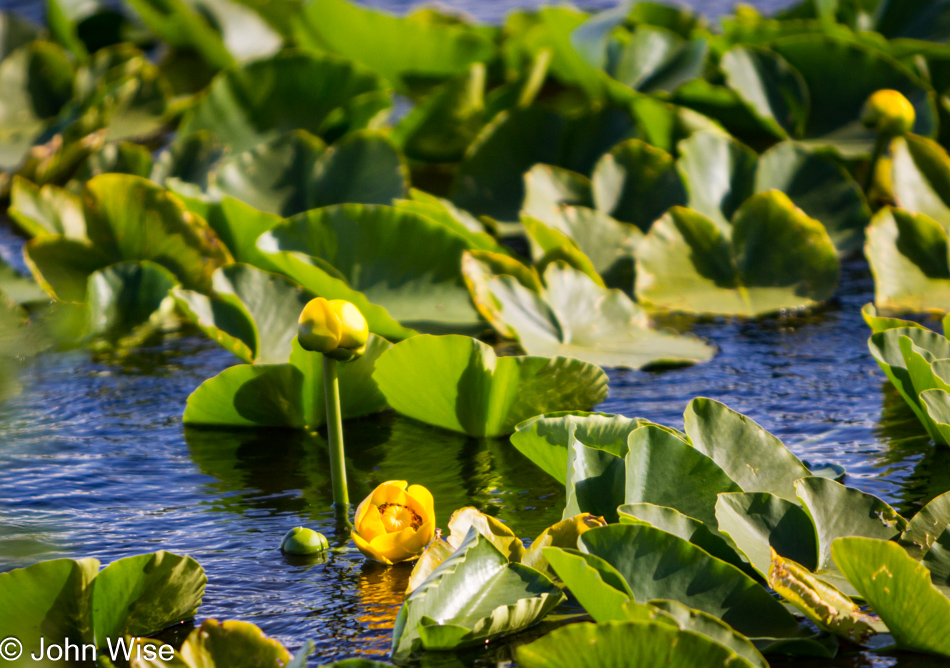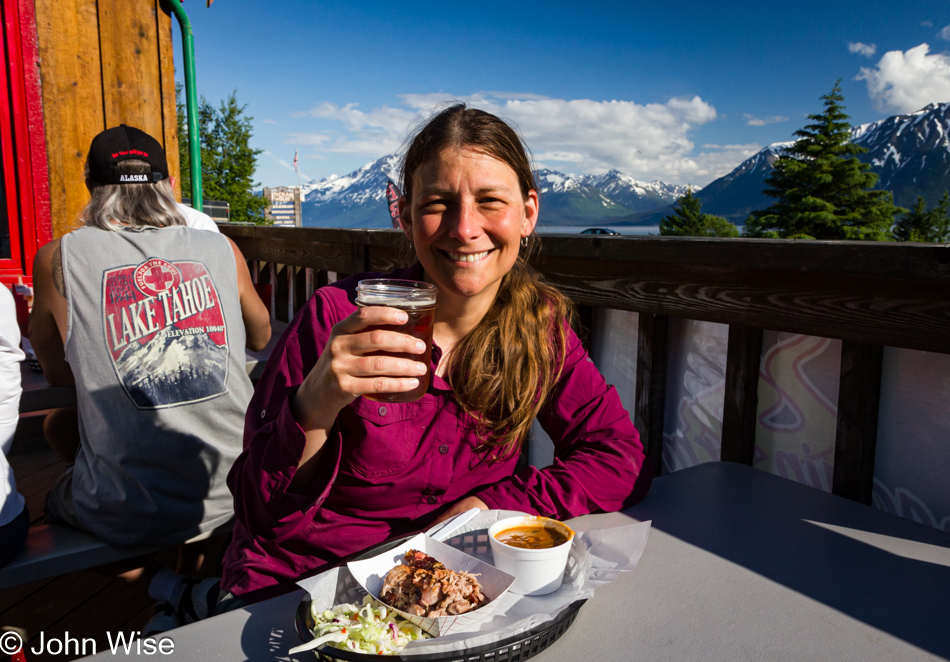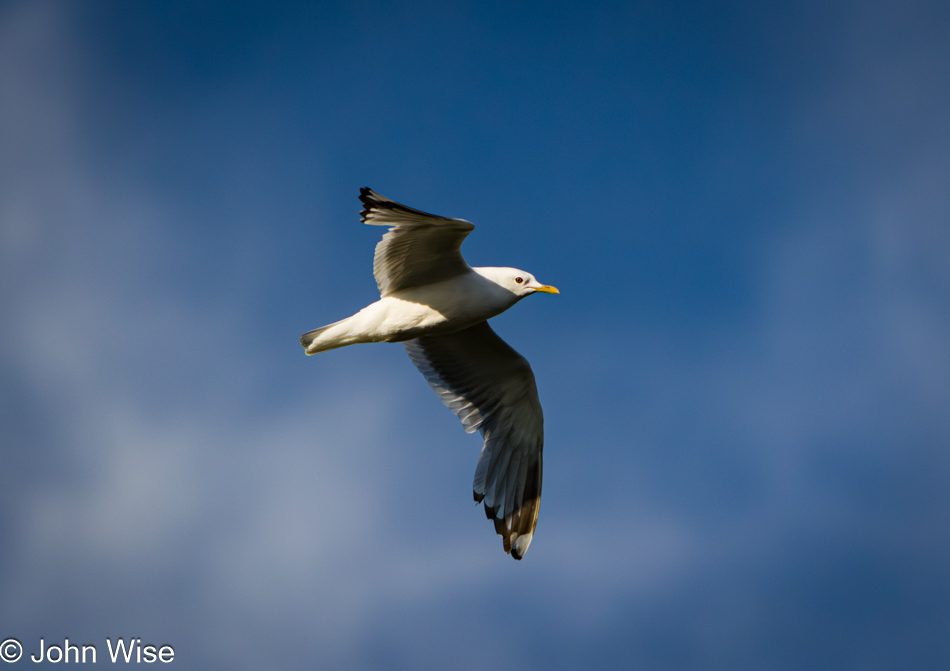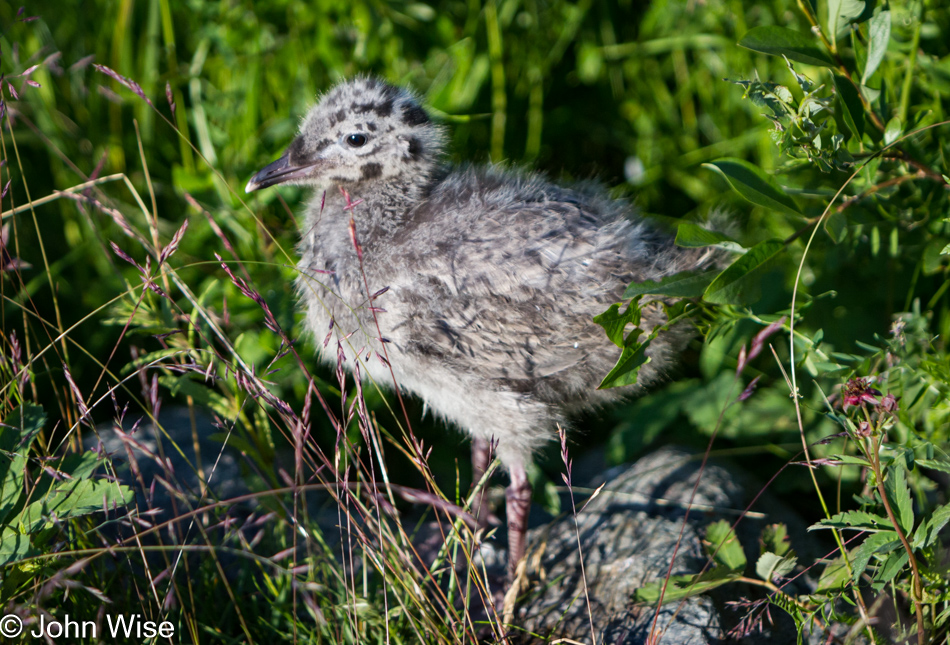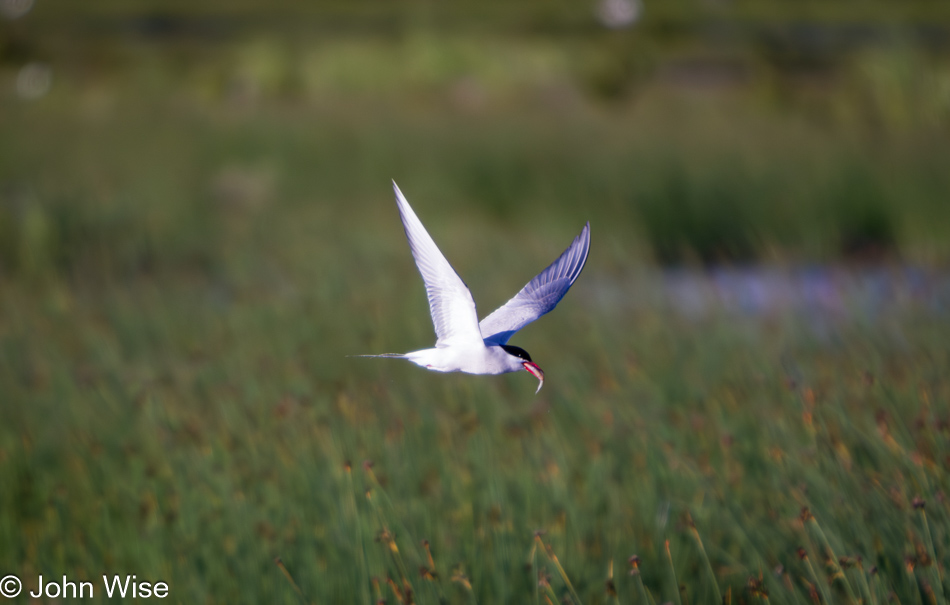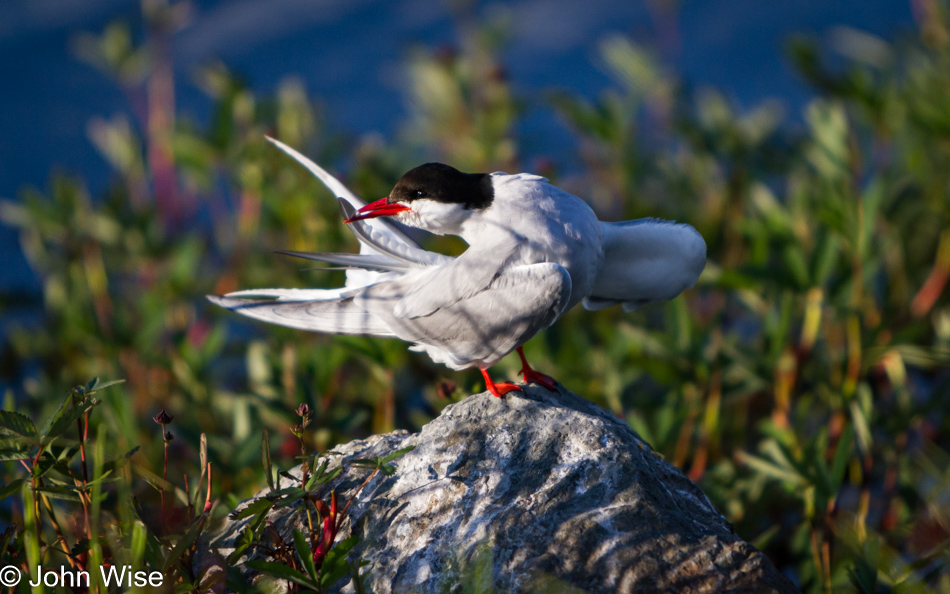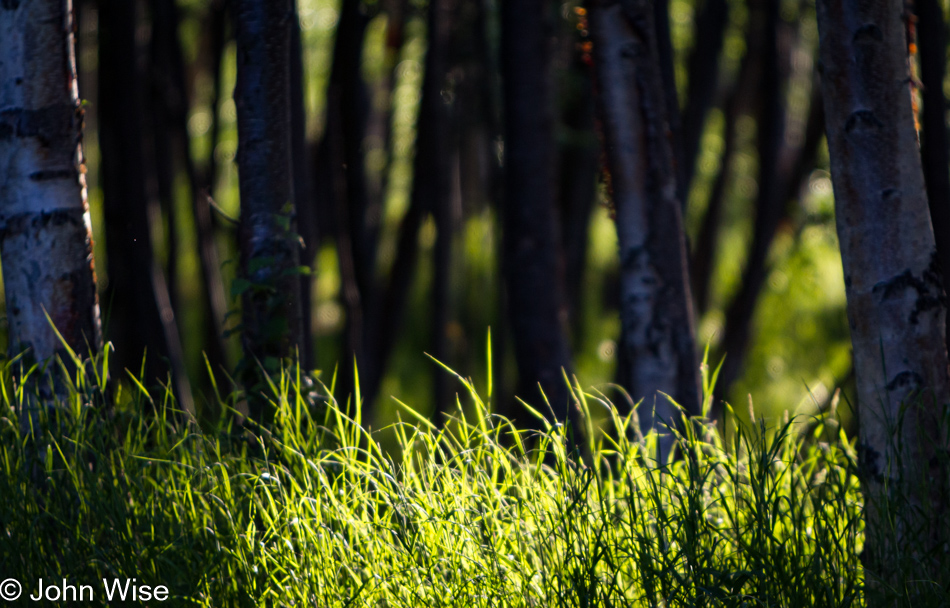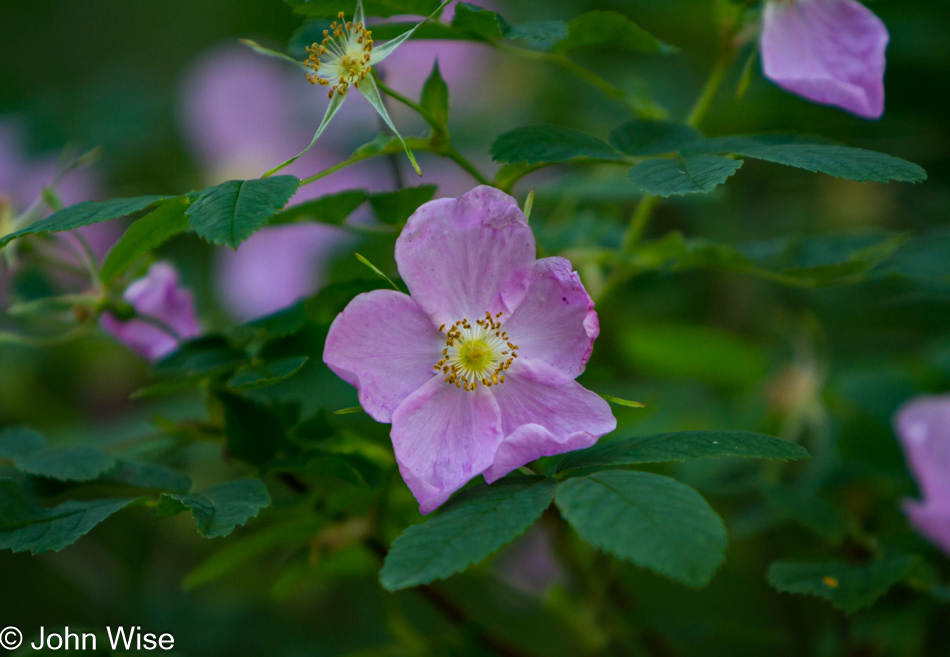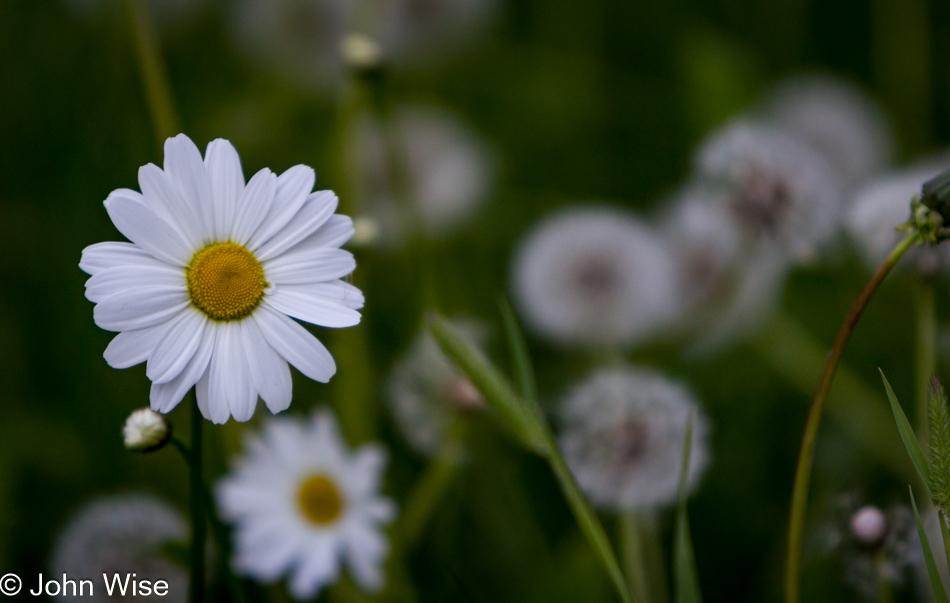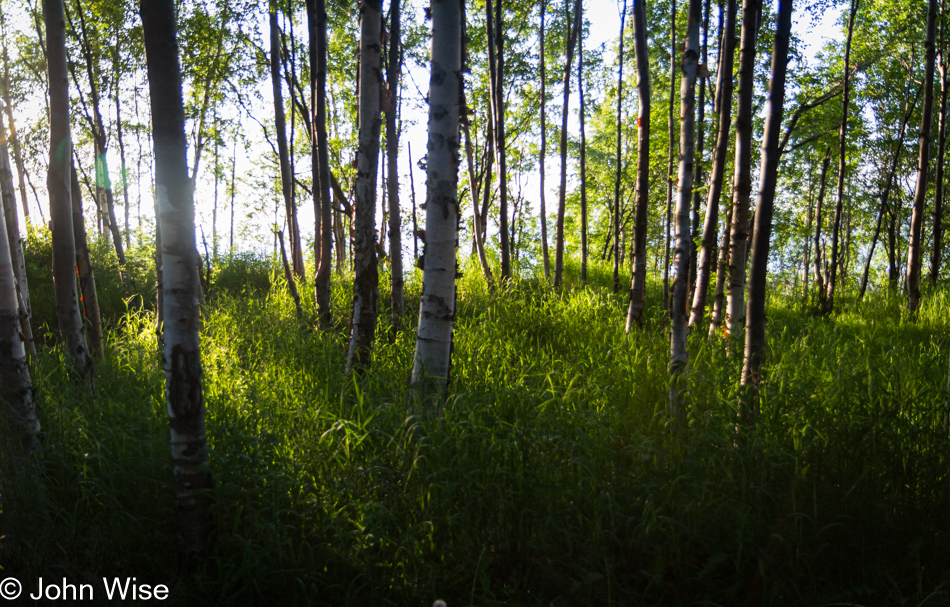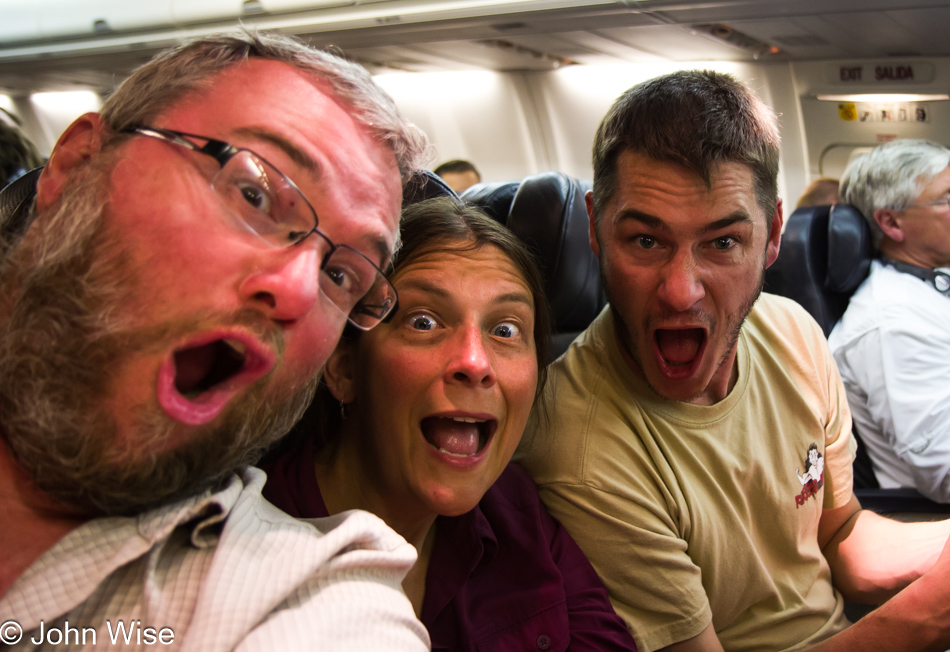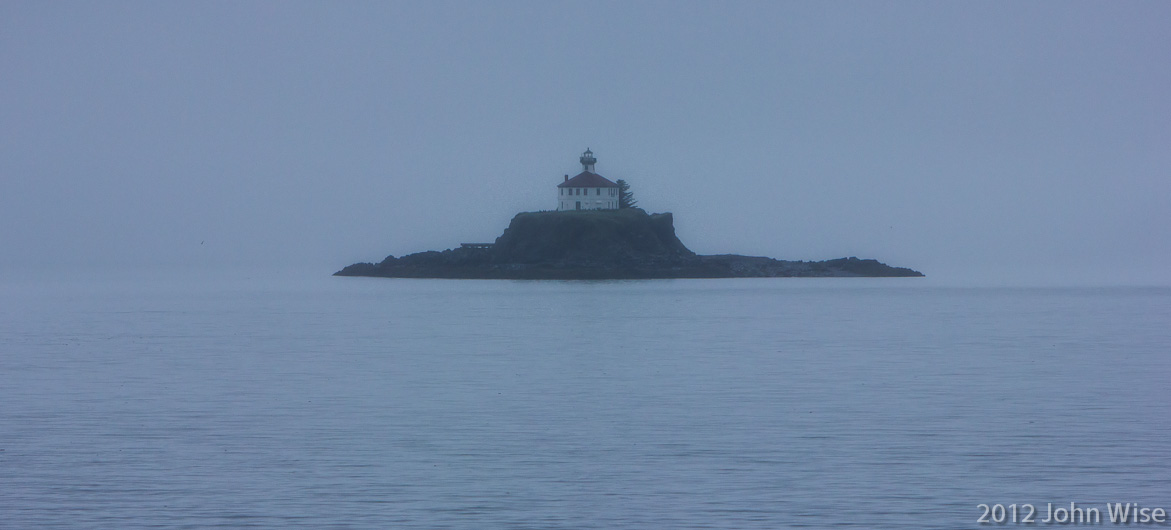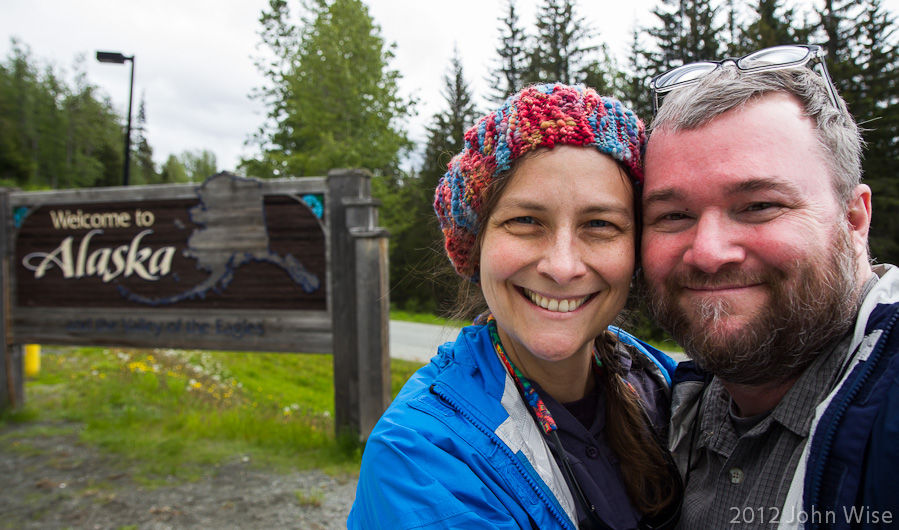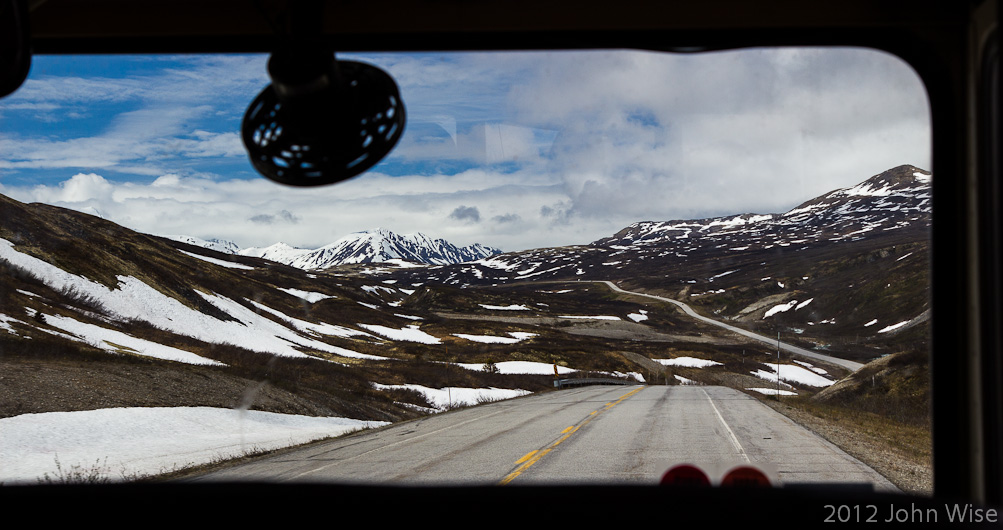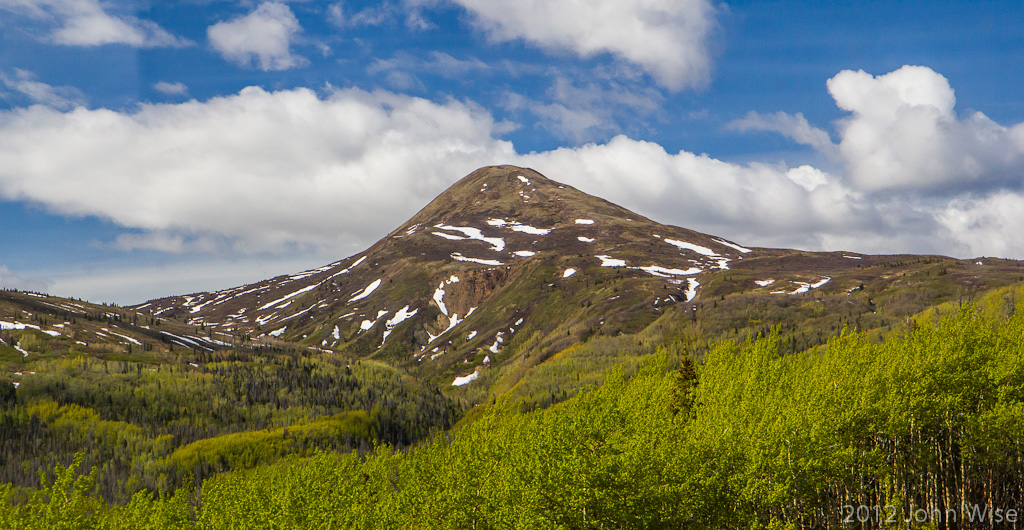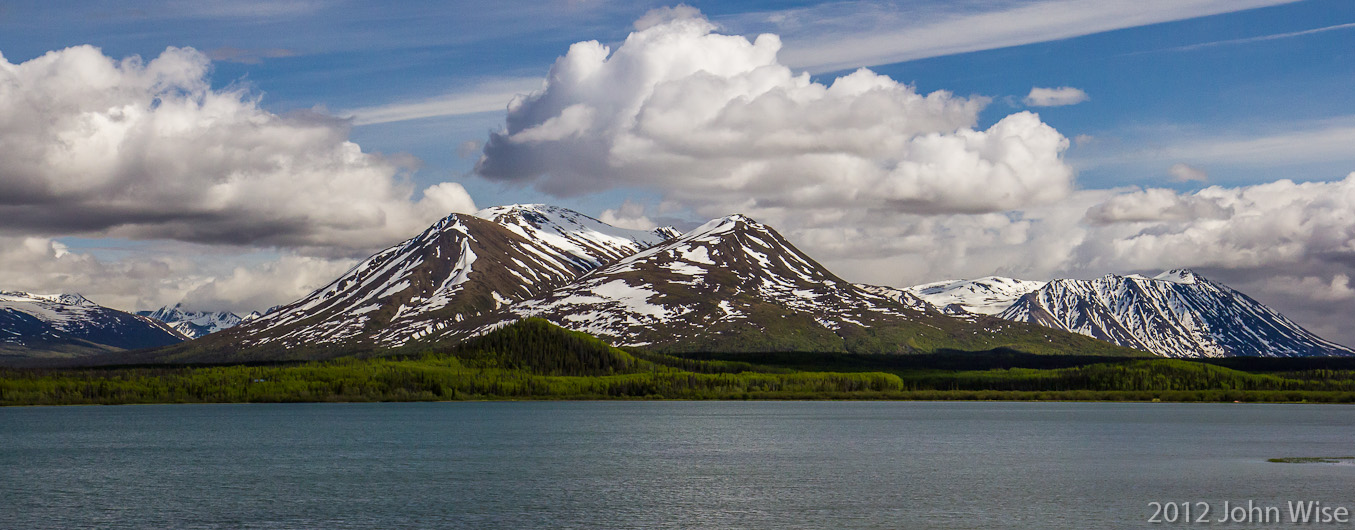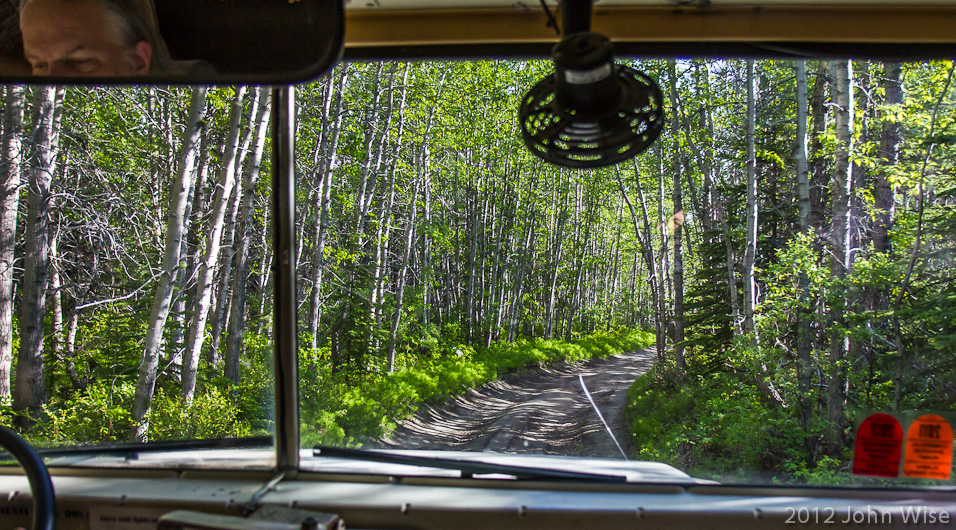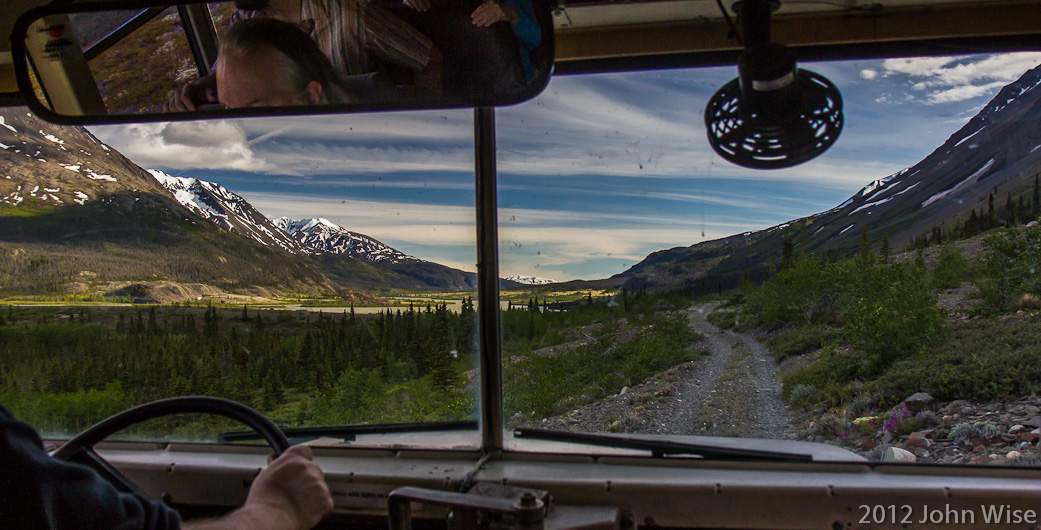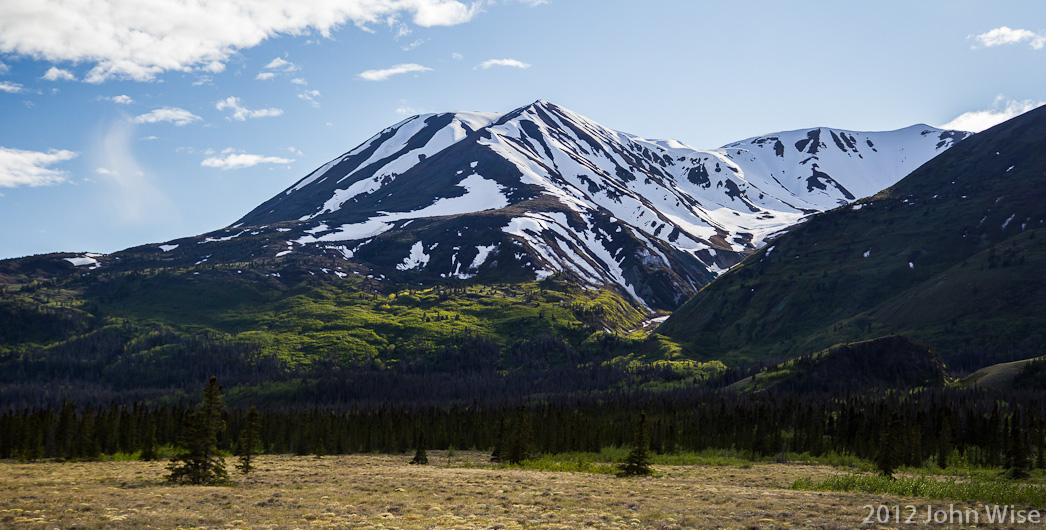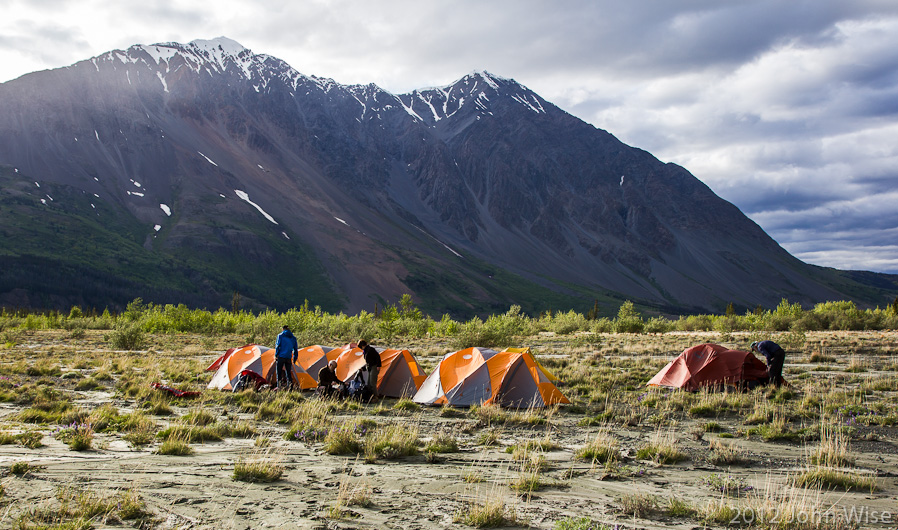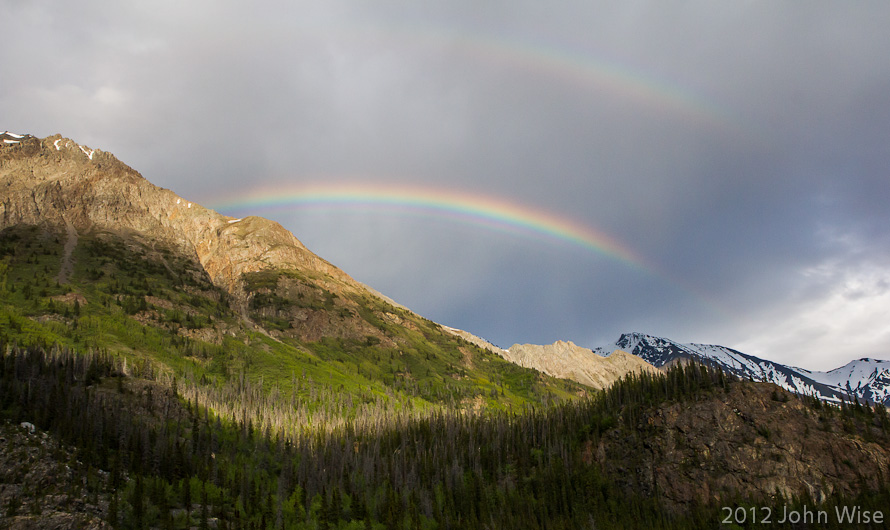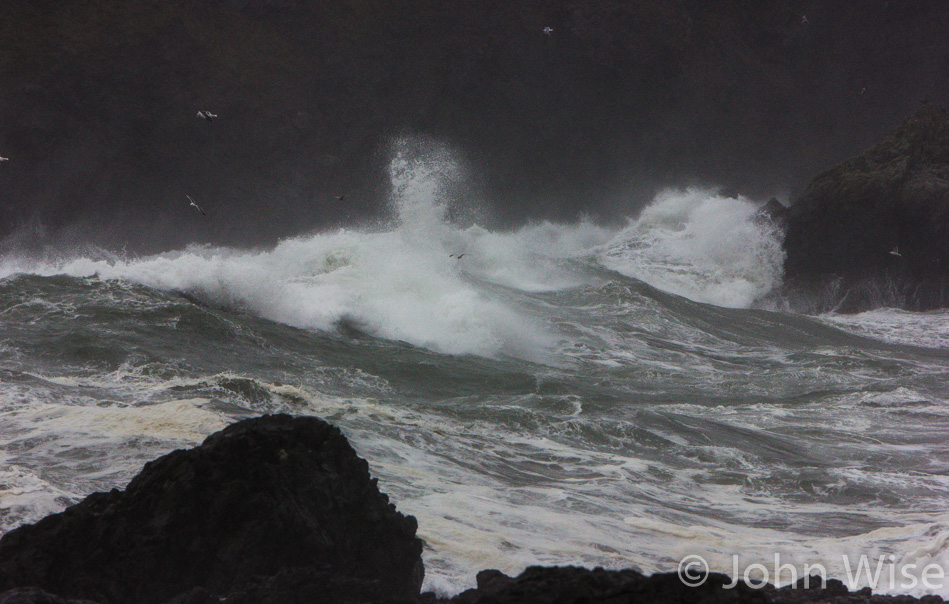
The carport survived, though it did wake us from time to time overnight as it attempted to escape the clutches of gravity and the measly plastic fasteners that were straining their connections. With the storm still raging, we’re in no hurry to get out. After hot showers and another practice session with our Jetboil, we are soon enjoying some oatmeal for breakfast, but only half the coffee as it boiled over. By mid-morning we leave the key in the room and set out. (After the trip, we learned that the carport and the roof of four rooms, including ours, were torn off the building at about 11:00 in the morning, two hours after we checked out!)
Not needing to be anywhere for the hikes we’d had planned, it is now time to play things by ear. Port Orford and the dock sound like a great place to be. At the top of the hill leading down to the dock, it is obvious the wind is blowing incredibly hard up here. By the edge, the wind must be doing close to 100mph, if not over. We see a pelican that didn’t survive the onslaught and must have been hammered back down to earth by the winds. Two others are hunkered down in asphalt cracks, trying to stay out of the wind. We are careful not to disturb them, afraid that once aloft, their wings will catch a draft, and the same fate will take their lives as it did the dead one nearby.
After watching the showdown at the dock for more than an hour, we feel satisfied that we can take a break from watching crashing waves. Passing a cafe called Port Starboard for a cup of coffee sounds like a great idea. Our server, Penny Lane (yes, that’s her real name), tempts us with a bowl each of locally harvested wild mushroom soup. No arm twisting was required as we settled into cozy comfort food in the warm, dry cafe. Turns out Penny wasn’t finished, she then told us how delicious their apple and cherry wood smoked local salmon is. Yep, she was right about that, too.
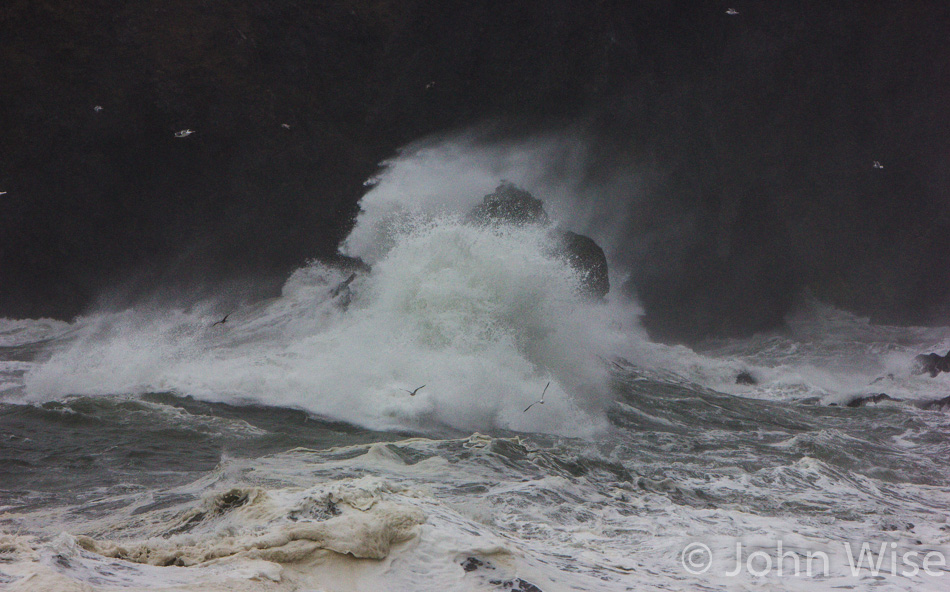
These moments are the luxuries that travelers look for. It’s not the resort or shopping amenities that satisfy us; we are not tourists. What makes the difference in our happiness are the intangibles: smells, sounds, feelings, and fleeting smiles. The cars, motels, and restaurants are minor players on our stage. It is the yurts, camp food, locals sharing a bite of something yummy or a great story, or experiencing the weather that keeps others indoors that makes our times memorable. Today, we won’t do much more than eat, drink coffee, and watch the ocean from the comfort of our car, and so far, everything is looking perfect to us.
Talk about things turning out perfect. Just north of Bandon is a small shop, not just any shop, it is the Wool Company. Dragging them in since 1983, this place adds icing to Caroline’s cake as it drags her in, too. There are half a dozen women inside knitting up another kind of storm, all of them situated around the old-fashioned wood-burning stove, though Marilyn the dog has nabbed the coziest of all spots right up near it. After a good long while chatting and shopping, we leave with some blue yarn and eight ounces of burgundy top. Top is combed fiber that is ready to be fed into a spinning wheel and made into yarn. What a great way to spend a rainy Monday, especially if you are Marilyn.
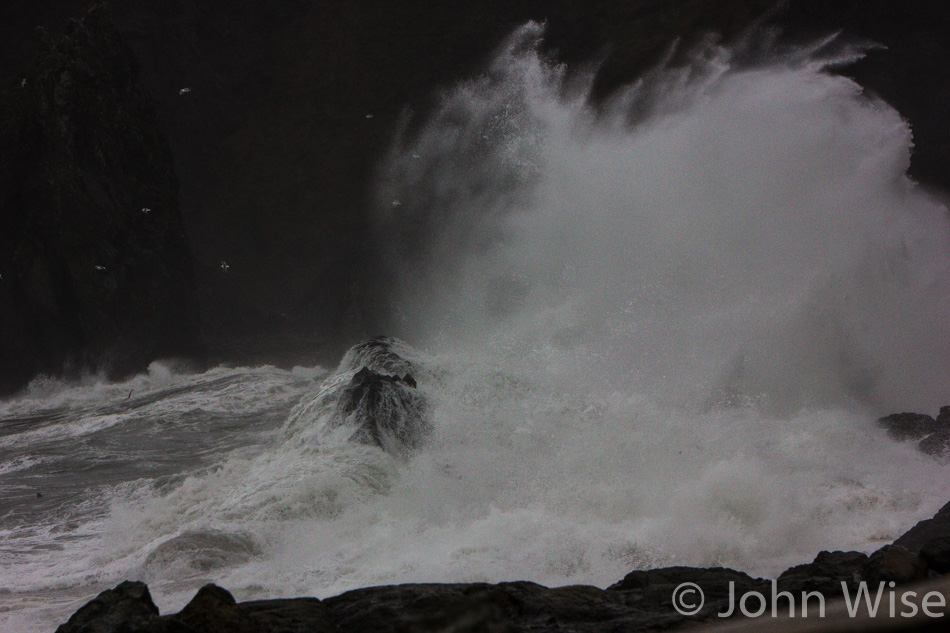
With the wind still blowing, we forsake another night in our tent and see if we can’t get a yurt without a reservation. Sunset Bay State Park is just ahead; no, it isn’t. The road is closed due to a downed power line. We turn around and drive back 20 minutes before heading north so we can then drive south and enter the park that way. In Coos Bay, the rain is coming down so hard I can barely see 40 feet in front of the car. That, though, was nothing because just south of Charleston, the rain comes down even harder, and I am lucky to see the line on the road a few feet ahead. We pull into the state park, which has available yurts; we only take one. Loop D, yurt G. Checked into our accommodations, we are beaming in smiles that threaten the sky with rainbows from the brightness.
Dinner choices are relatively plentiful, but nothing is grabbing us, meaning me, because I’m the hard one to satisfy. Hey, a German place, the Blue Heron Restaurant, not to be confused with the Blue Heron Cheese Company in Tillamook. On the contrary, the Blue Heron Cheese Company is nothing less than fantastic; this German place? Well, let’s say it’s kind of like Chinese food in rural Alabama, it doesn’t really work, and it’s nothing like authentic, but locals who’ve never had different seem to like it.
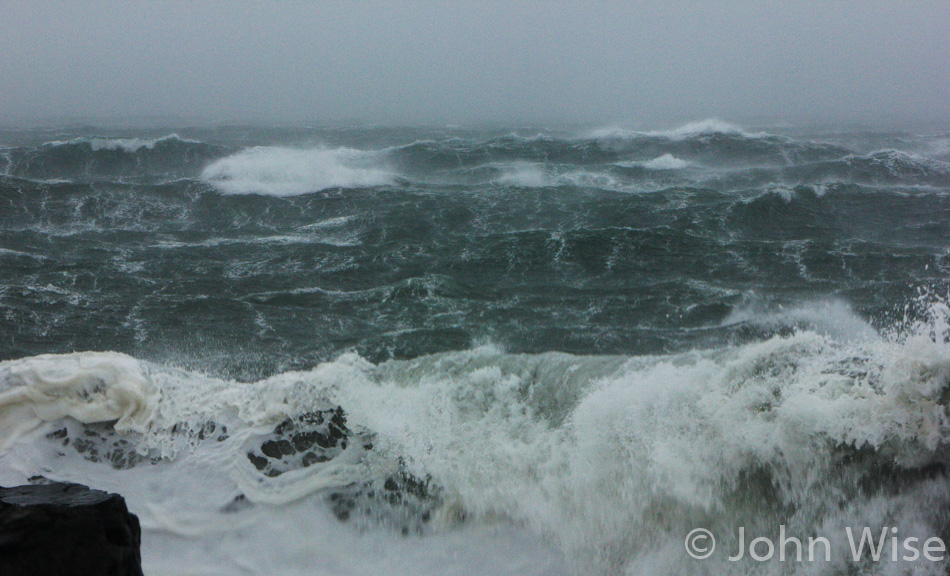
Hey, woman across from me, you peer over your glasses, compensating for what corrective lenses need not fix to work five little sticks only slightly thicker than pencil lead to make that bison wool dance in patterns that tie it into knots. From your delicate, warm fingers, you craft a pair of mitts that are intended to keep warm the hands that convey so much love, even when busy making things.
The flash of your silver wedding band is a reminder that you promised yourself to me; this is our shared outward symbol. But it is in your eyes and smile that I feel the inward sense of what we share. To sit here in this forest under the canvas canopy that shields us from the cold and rain, I watch your hands and cherish these times when memories grow larger than the extent of the hours we share on these incredible outings. This is how I love you tonight.
